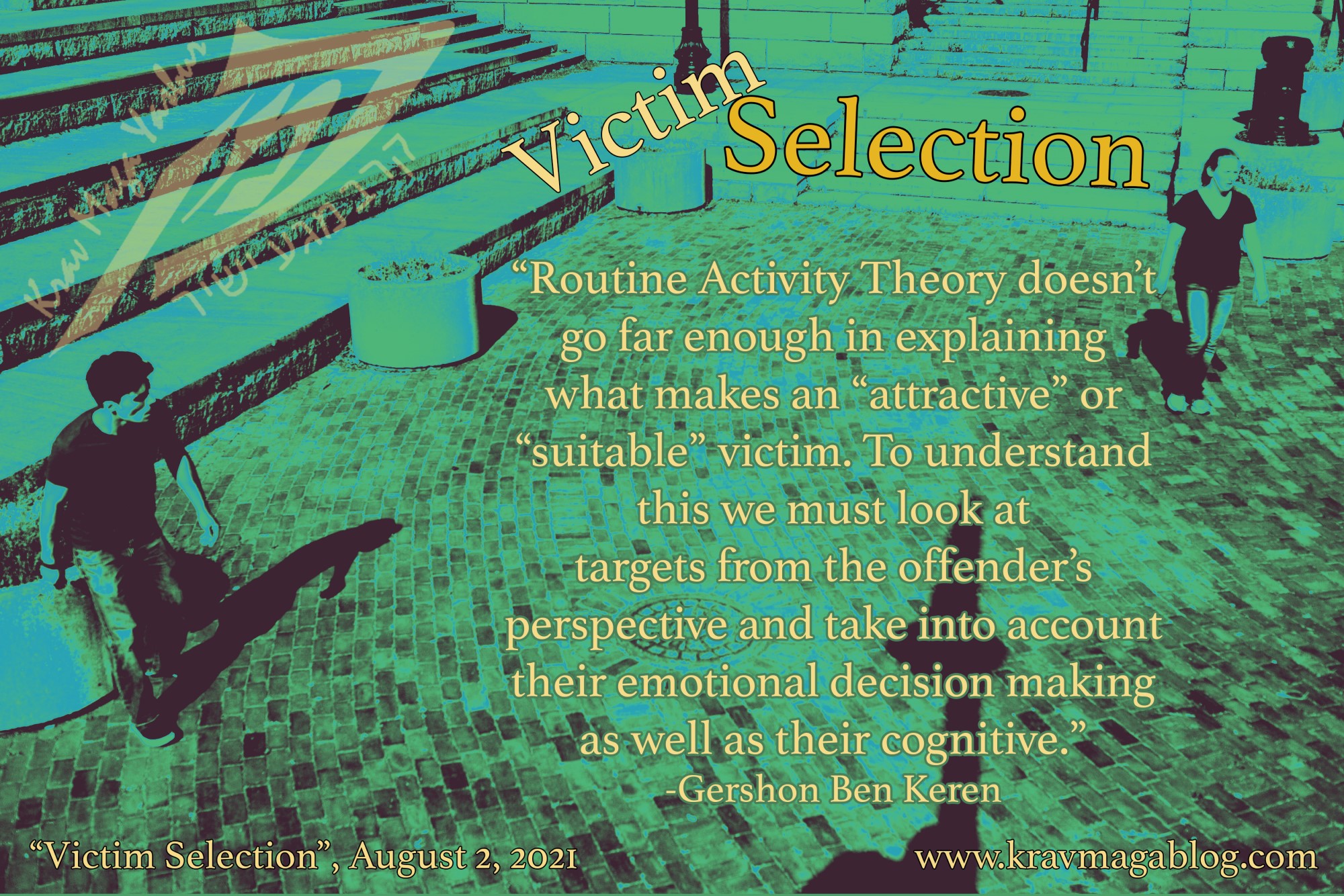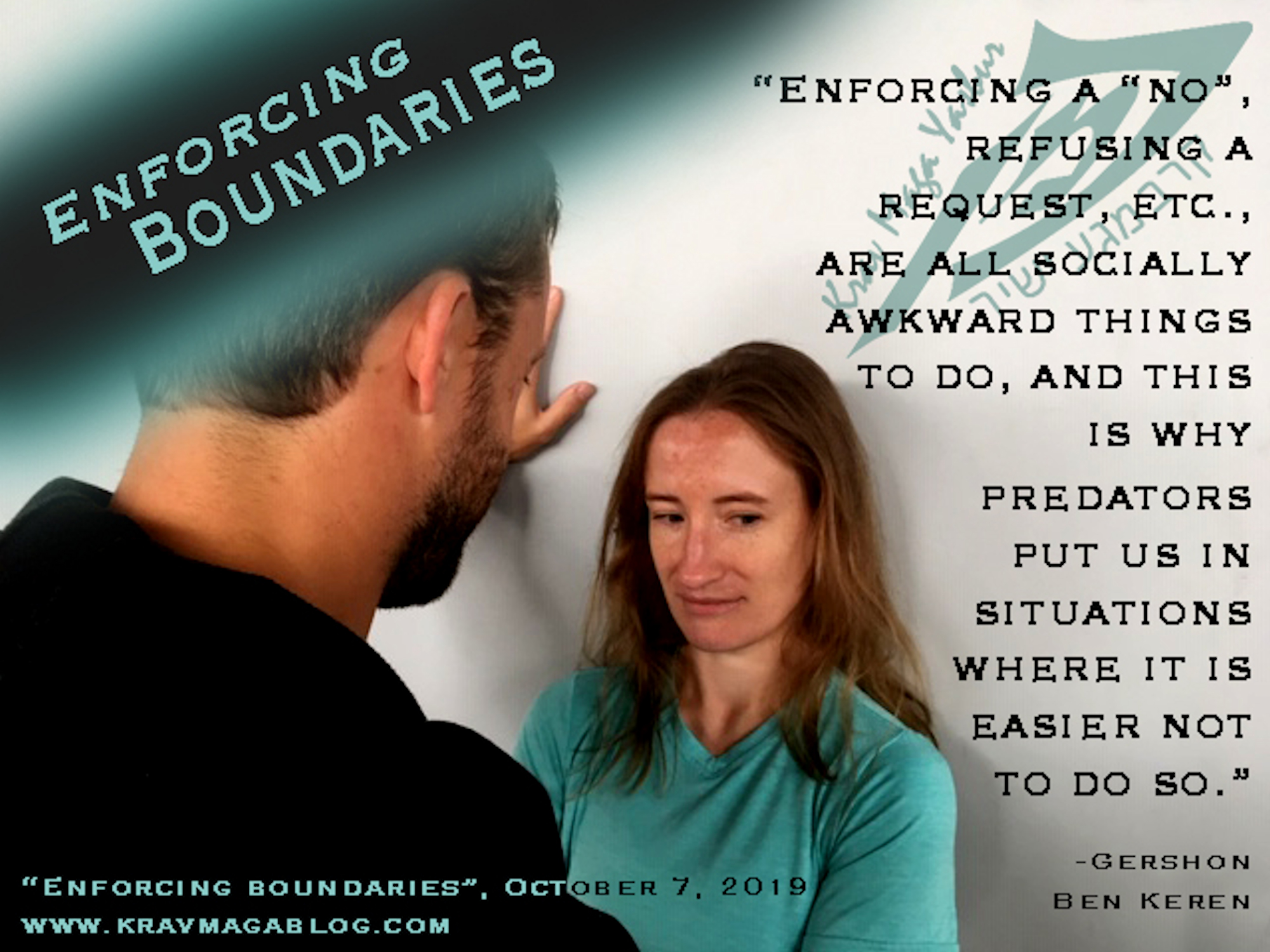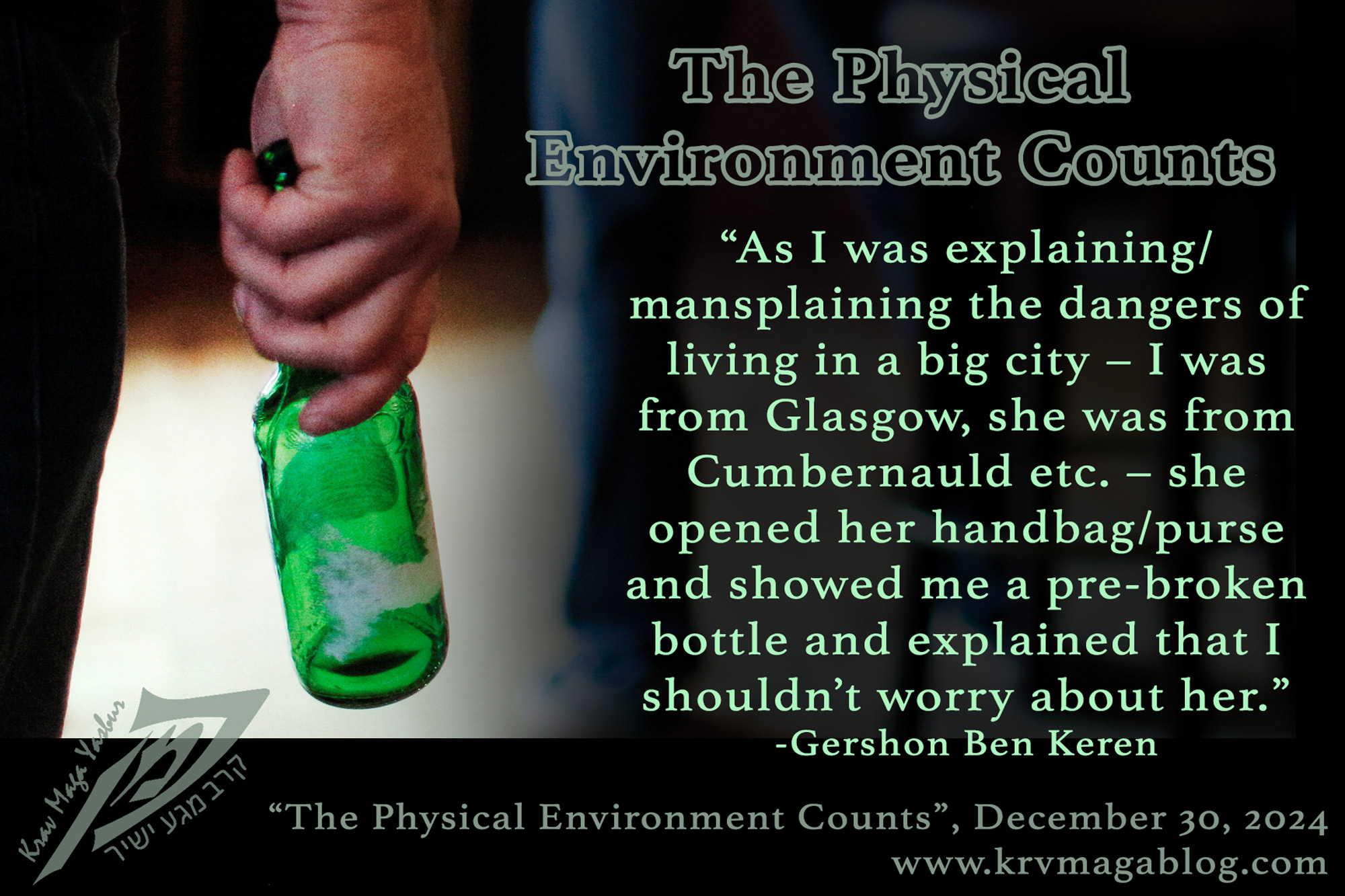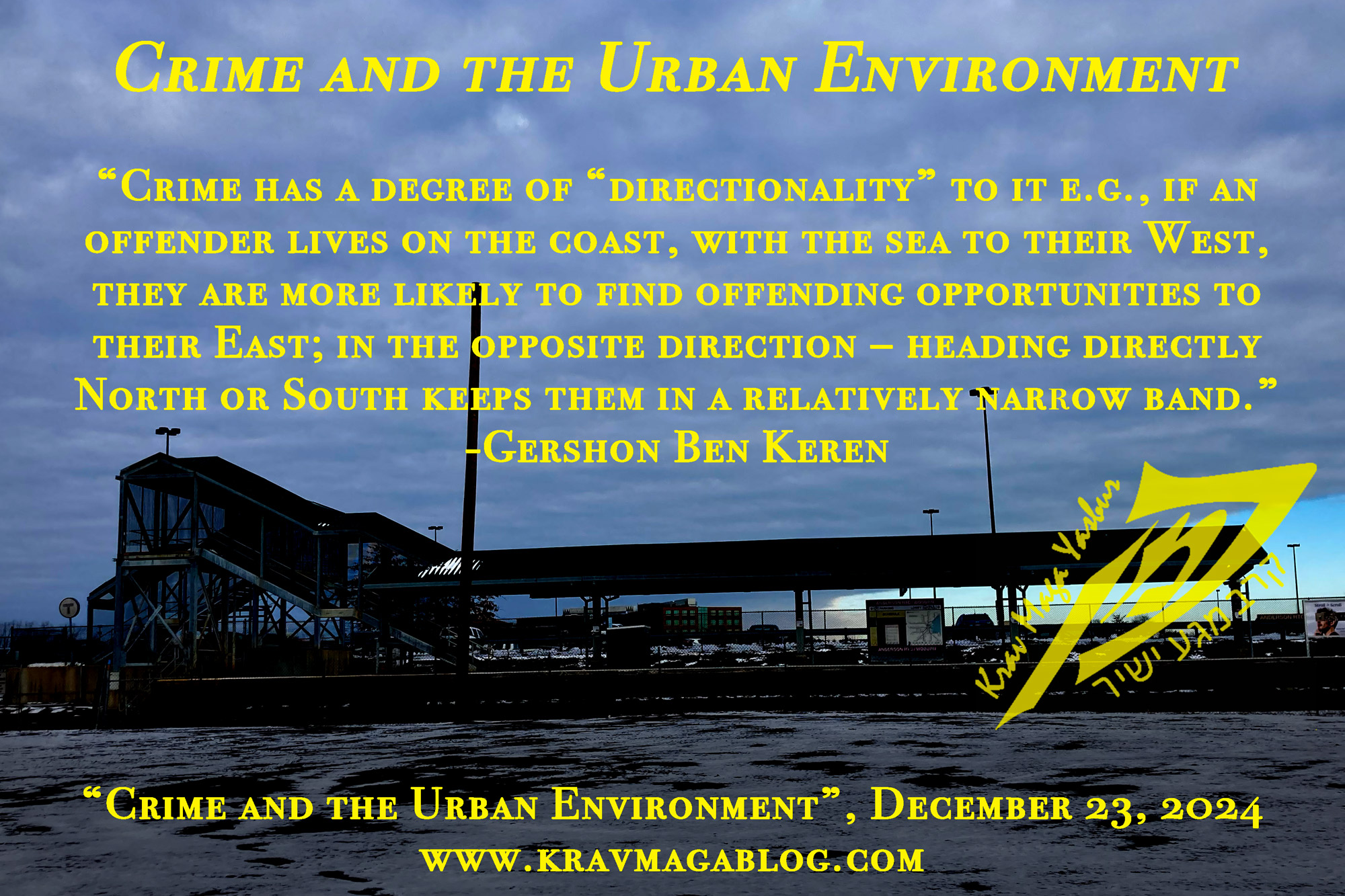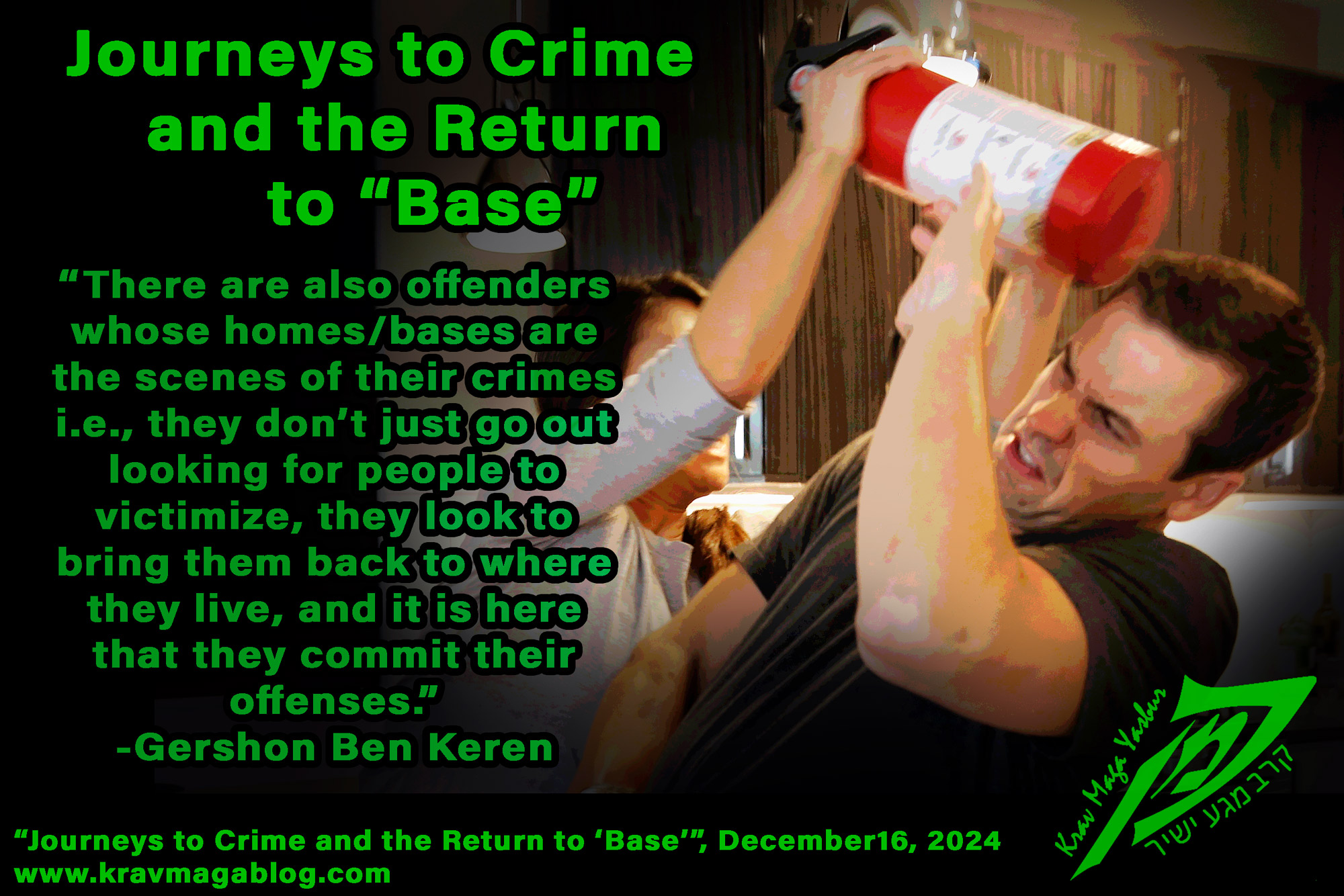Crime Foraging Theories, is an article written by Gershon Ben Keren, a 5th Degree Black Belt in Krav Maga, who teaches Krav Maga in Boston, MA. He has also authored three Amazon best-Selling Books on Krav Maga.
Although we may be highly sophisticated animals, with an incredibly unique and sophisticated (but not necessarily complex) brain, we are nonetheless still animals, and some of our behavioral patterns are extremely similar to those of other species – mainly because we have inherently adopted certain strategies from particular evolutionary specialists who have discovered the most efficient and effective ways to survive. This makes sense, as our brains did not primarily evolve to think, which is what we as a “higher species” might like to believe and tell ourselves, but to simply manage our resources in the most cost-effective manner possible e.g., when we were hunter-gatherers; was it worth the cost of travelling a greater distance to potentially gain access to a larger number of animals (and a greater source/quantity of protein)? In this article I want to look at certain human offending patterns, which have their base in more primitive survival/hunting strategies, such as those applied by foraging animals, and those that hunt for live prey etc. (as well as differences) so that we can gain a better understanding of how predatory individuals act and behave.
A central feature of all criminal foraging theories is that of a base i.e., the place/location that the offender operates from, and then returns back to etc. Often when engaging in geographical profiling the base is assumed – at least initially - to be the home, though it may be discovered later that it was a friend’s home, or a bar/pub that the criminal operated from. Using this assumption, Dr Stuart Kind was able to successfully locate serial killer, Peter Sutcliffe’s (the Yorkshire Ripper)’s house, to within a 1400-yard radius. He worked from the premise that offenses committed early in the morning, would be closest to the killer’s home, as he set out from there in the morning, as would those committed in the evening/late at night, as he returned back home, in order to sleep (it is the fact that sleep is so central to the temporal pattern of animal behavior that the home is often looked on as the most central and significant base). To increase the accuracy of his prediction, he gave extra weight to early offenses, postulating – correctly – that the early offenses in the killer’s campaign were most likely to have been committed close to the offender’s home, as the killer would be most familiar with this activity and awareness space, and offend here before they were confident enough to commit their crime(s)/forage in less familiar areas etc. Sometimes, an offender may have multiple bases, that perform different functions. It may be that a serial shoplifter, sets out from their home in the morning to commit a series of offenses, and then rather than return straight back home, first goes to a pub (close to where they offend) where they know they can openly sell their stolen goods. Often in such cases the routes between these nodes (the offender’s home, the shops where they commit their offenses, and the pub/bar where they offload their goods), become as important as the “bases” themselves.
Another concept that is key in crime foraging theory is the Journey-to-Crime (JTC), and the idea of distance-decay. To understand these things better, we need to recognize that most offenders spend the largest amount of their time not offending, and instead engaging in routine activities, such as shopping for food, going to bars/restaurants, going to school/work etc. Whilst a predatory individual may be constantly switched on, ready to exploit an opportunity, they aren’t always actively and purposefully on “the hunt”. For many financial predators there are particular things that prompt them and motivate them to go looking for victims e.g., the rent on their apartment is due, or there is a social event such as a party that they need money for etc. These are the times that they will make the decision, to go to a particular location they know, to look for potential victims to rob etc. The majority of people’s routine activities occur relatively close to a significant base, such as a workplace or home. That is, when you do your grocery shopping it is likely to be at a supermarket close to your house or your place of work, or perhaps on a major routeway between these locations/bases. This means that for an offender who is not actively looking for potential victims, but suddenly comes across an opportunity too good to miss, that will likely occur near one of their bases. However, if they are actively/purposefully looking for the largest supply of potential victims they may be prepared to travel further – just like a foraging animal that has become aware of an area of bushes and plants that are good to eat – and “commute” to such victim-rich locations. Examples of this type of foraging behavior can be seen when individuals and gangs commute into a city center (or a shopping mall) for the sole reason of offending.
The mobility of offenders is also a factor in foraging behavior(s) e.g., an offender with access to a car, has the ability to travel greater distances, than one without – in some instances a car may be stolen for the purposes of committing a series of crimes. There may also be some locations, which are only accessible by car. In my own research into distance decay, I found that all the known offenders for street robberies in a shopping mall/complex in Waltham, Massachusetts, lived outside of the city and commuted there to commit their offenses. This appeared to be down to the fact that there was no “easy” pedestrian route to the complex i.e., you would have to walk along a road for several miles, with no sidewalk, and under a narrow bridge, to get there. However, the complex was situated just off of Interstate 95, which crossed with Interstate 90, just a few miles away, making the mall extremely accessible by car (something the planners had obviously taken into consideration). This made the location extremely attractive for mobile offenders who could drive in from neighboring cities to commit their crimes, but not so attractive for local non-mobile offenders, who tended to concentrate their activities in the city center, and in the neighborhoods where they lived. This also has implications for profiling as it is likely that it is older, rather than young, offenders who have access to cars, and may be more mobile – having lived a bit longer may also make them more aware of other locations and areas that meet their offending criteria.
The better we can understand how predatory individuals “forage” and choose their locations, the better able we are to predict where offenses are likely to occur – even if we are in an “unknown” area. By understanding how predatory individuals interact with the environment, we can quickly identify what makes – and what doesn’t make - a “hotspot” for criminal activity. This can then be used to assist us in making dynamic risk-assessments of situations we may find ourselves in.
0 COMMENTS
